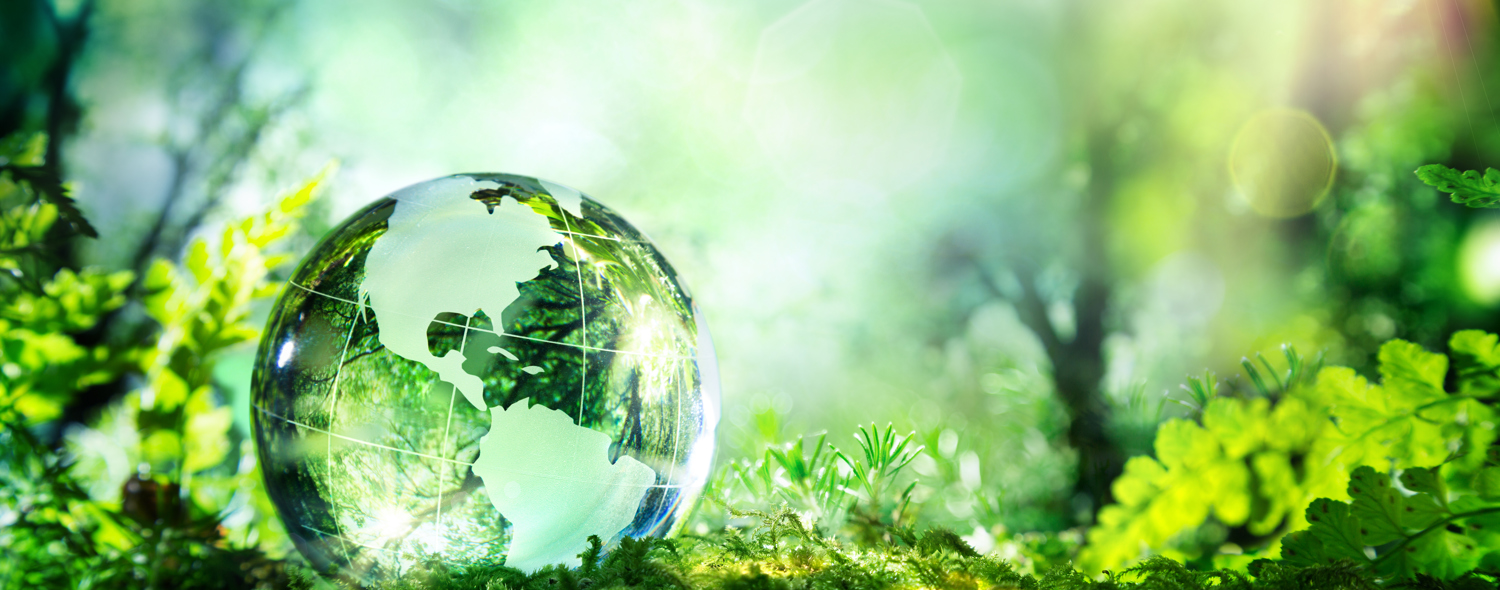
Biodiversity and Climate Change - #TimeForNature
This year, to raise awareness of the importance of biodiversity in relation to climate change as part of World Environment Day, we spoke to Dr Xiangyu Sheng, Director of Climate Change and Air Quality at GL Hearn, and Amy Van de Sande, Senior Air Quality Consultant at GL Hearn, as they explore the consequence of our actions on the natural environment.
This year’s theme for World Environment Day is Biodiversity, and there has never been a more important time to understand and act upon how our actions and interactions with nature can have a devastating effect.
As you would expect given my role as Head of Air Quality and Climate Change at GL Hearn, and Amy's role as Senior Air Quality Consultant, we are passionate about the protection of the planet – we see it as our duty to preserve the natural environment and our responsibility to manage our built environment respectfully and with our natural habitats safety and future success front and centre of how and why we do the things we do.
Biodiversity is extremely important to human wellbeing and plays a vital role in the production of our food and medicine. Many of today’s major environmental issues such as plastic pollution, climate change and land-use change continue to have an overwhelming impact on the natural environment, including plants, animals, forests, oceans and coral reefs. Here, we look at the interactions between climate change and biodiversity and what we can do to protect it.
One of the main issues caused by climate change is the increase in land and sea temperature leading to the melting of sea ice. Sea ice is crucial for animals such as polar bears, seals and birds in order that they get the food they require to survive and to sustain a healthy food chain, including our own human food sources. Decreasing sea ice pushes polar bears closer to coastal communities in a hunt for food causing a potential danger to humans in already challenging environments. Increases in sea temperatures can also lead to the bleaching of coral reefs, an important ecosystem housing many species. The increase in water temperatures causes the corals to lose vital algae thus releasing all their vibrant colour and turning white. This in turn reduces the shelter and food required for the many species the reef houses, reducing the biodiversity of the oceans and reducing the source of marine life as food for the human population, especially those who locally may depend on it as a main food source.
Forests are a vital ecosystem on our planet for both animals and humans, providing food, shelter and livelihoods. However, they are being cut down at an alarming rate. Deforestation causes habitat loss for thousands of different species and releases stored carbon dioxide back into the atmosphere as well as removing the very trees which can absorb the existing carbon dioxide, a double hit on increasing temperatures and climate change. Causes of deforestation include land-use change for livestock, infrastructure and food crops. Climate change not only causes an increase in temperature but also increases the likelihood of extreme weather events such as storms and flooding. An increase in flooding will decrease the quality and quantity of our food crops and it may reduce the availability of food to us, especially to those communities in hard hit areas.
The aspiration of many of our actions may well be to develop a better quality of life for an increasing human population. However, whilst this may well provide short-term benefits, the adverse impacts are likely to be felt for much longer, not only for plants, animals and ecosystems but also ultimately the human population. So how can our actions against climate change protect biodiversity?
The United Nation’s Paris Agreement has a central aim - to keep the increase in global temperatures to below 1.5ᵒC in order to try and reduce such devastating impacts. In order to achieve this, we all need to play our part in reducing our greenhouse gas emissions and live a more sustainable lifestyle. The choices we make daily can have a devastating ripple effect across the globe. Reducing our energy usage. Choosing wisely on modes of transport and shopping more sustainably will reduce our personal emissions, whilst supporting businesses who promote sustainability and the move to a cleaner way of living can help to make more of an impact on a national and international level.
With the ongoing Coronavirus (COVID-19) pandemic and the climate crisis, this is a perfect opportunity to ensure we don’t go back to our normal way of living and instead embrace and protect the natural environment we have all come to appreciate that little bit more during lockdown.
In the recentlypublished Environment Bill 2020 by Defra (i), the nature and biodiversity part of the Environment Bill (Part 6) and conservation covenants (Part 7) provide a framework of measures to support nature’s recovery in line with the ambition set out in the 25 Year Environment Plan.
This Bill contains a coherent package of new duties, tools and support to drive improvement for nature:
- a 10% biodiversity net gain requirement on new development
- a strengthened biodiversity duty on public authorities
- Local Nature Recovery Strategies (LNRSs)
- targeted measures to protect existing trees
- conservation covenants
One of the few places where activity has increased through the pandemic is urban parks and open spaces, many of which have seen huge increases in the number of people visiting for daily exercise. A new approach to city planning should bring open spaces and parks into the heart of cities and focus on access to core services.
A more holistic approach to planning that combines grey, green and blue infrastructure supports better health, better biodiversity, better accessibility and climate adaptation and mitigation strategies. Furthermore, good parks within the urban fabric can help cities implement emergency services and evacuation protocols. For example, in population dense cities such as London, without proper affordable housing provision with adequate public spaces can lead to problems. COVID-19 may prompt changes from temporary measures to that make it feasible for people to follow social distancing guidelines to more lasting changes.
The UK Climate Change Act commits the UK to cut carbon emissions by 80% by the year 2050 and on 27 June 2019, the UK passed a more stringent net zero emissions law to bring all greenhouse gas emissions to net zero by 2050. As a result of this, many local authorities now have to ensure that development within their authority are also reaching net zero carbon emissions in order for the UK to meet its targets.
We have been advising our clients to determine the carbon emissions associated with both the construction and operational phase of the scheme to ensure that they meet the net zero emission targets. We also review their landscape strategy and assess the carbon emissions that could be offset, by planting trees, hedges or public green provisions for example.
- Share
With the ongoing Coronavirus (COVID-19) pandemic and the climate crisis, this is a perfect opportunity to ensure we don’t go back to our normal way of living and instead embrace and protect the natural environment we have all come to appreciate that little bit more during lockdown.
You may also be interested in




